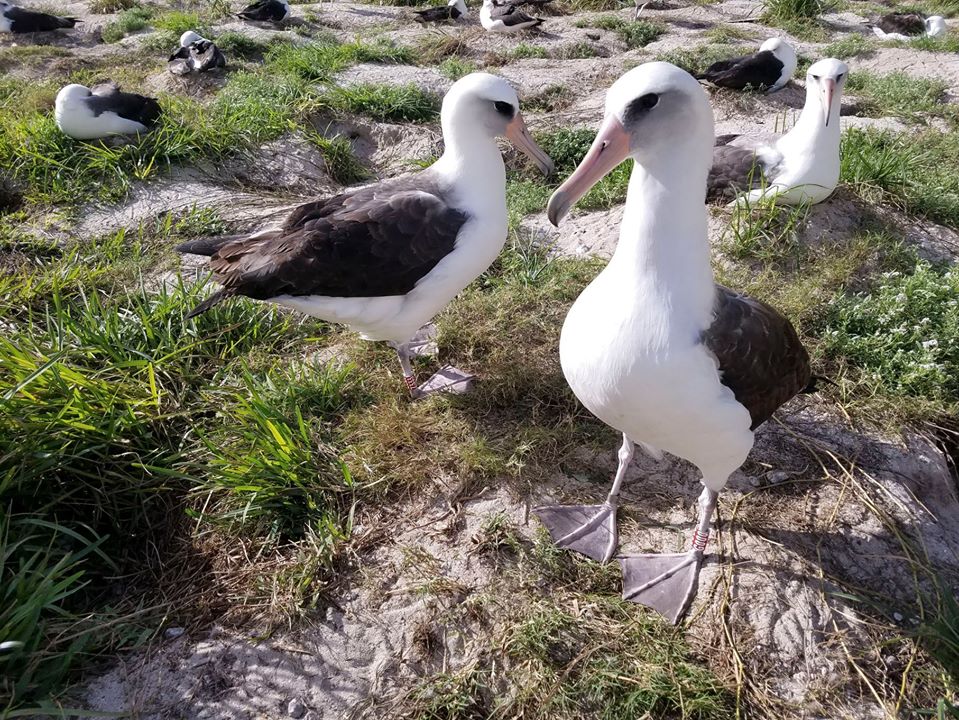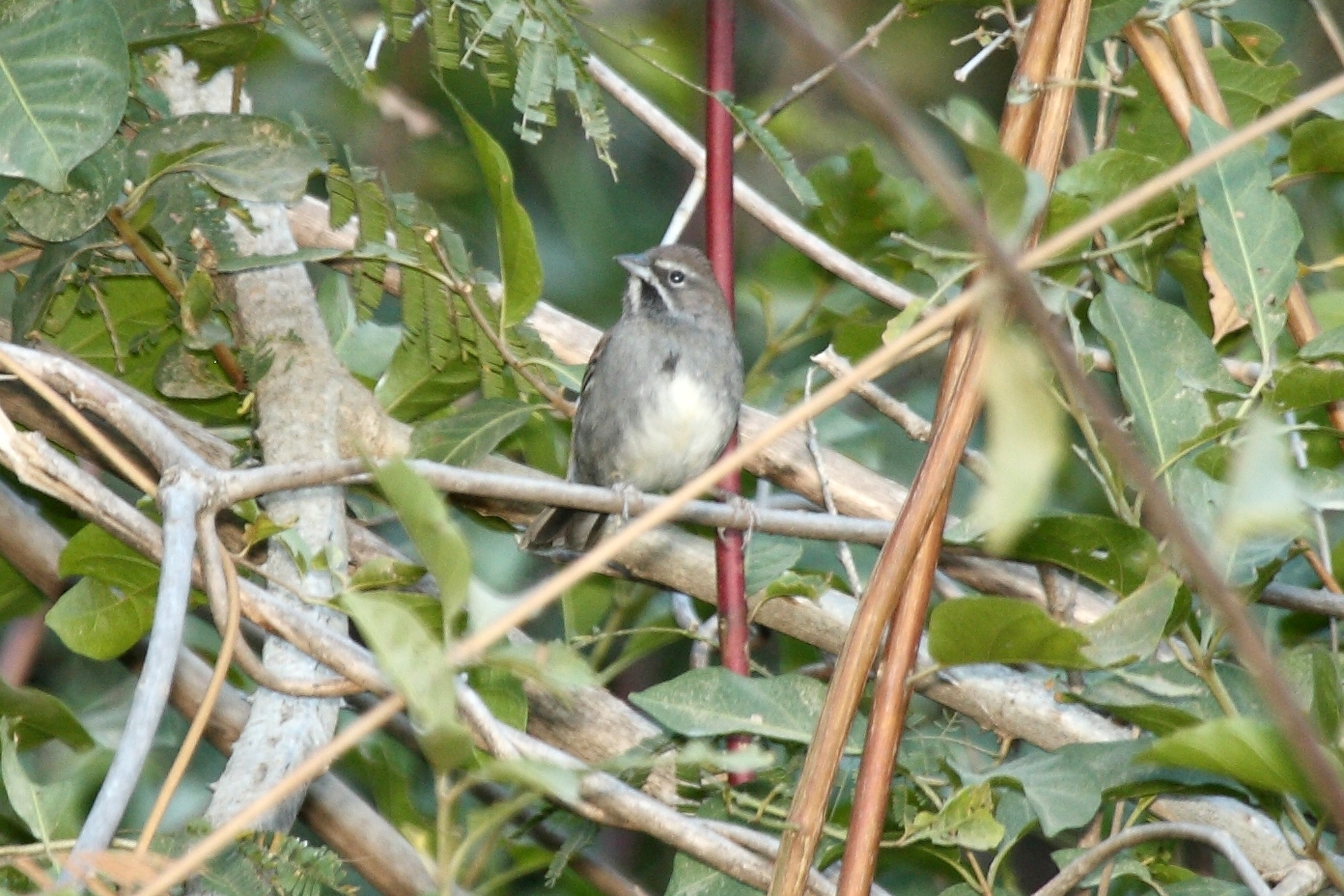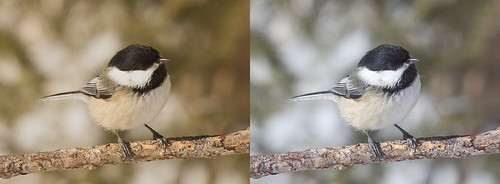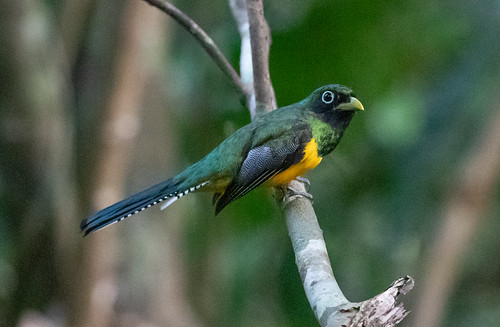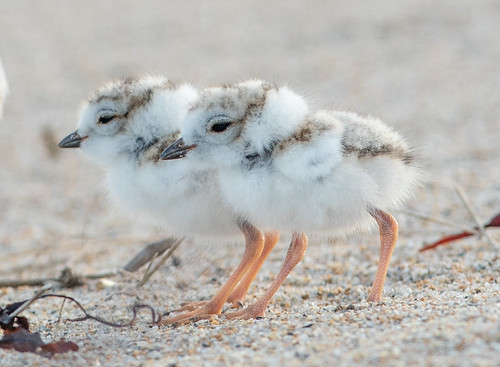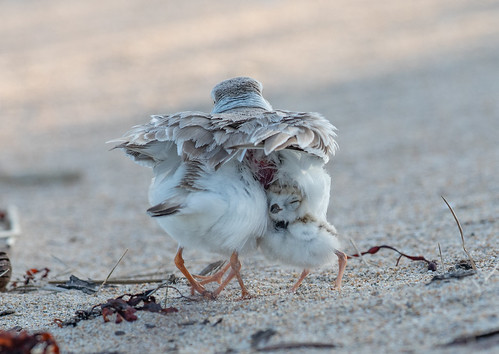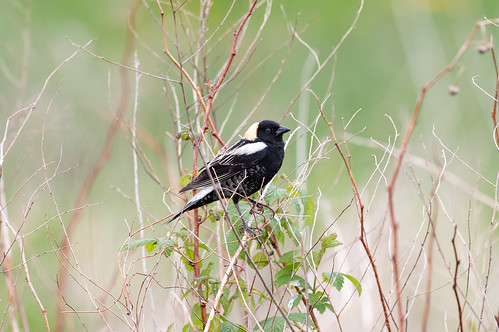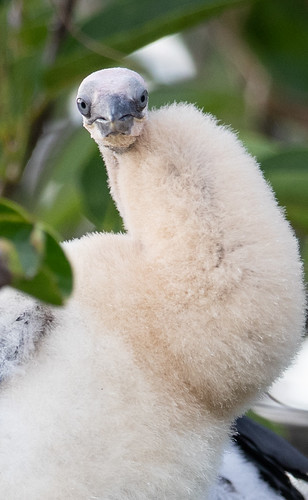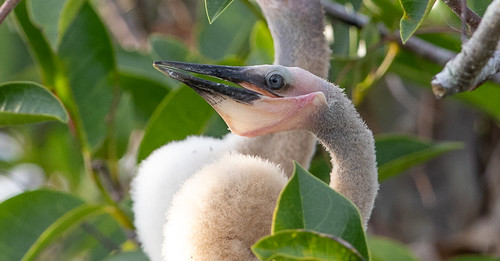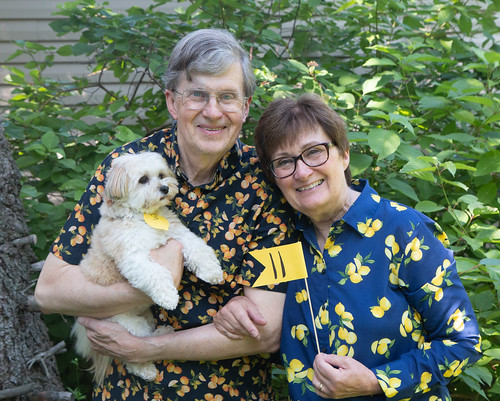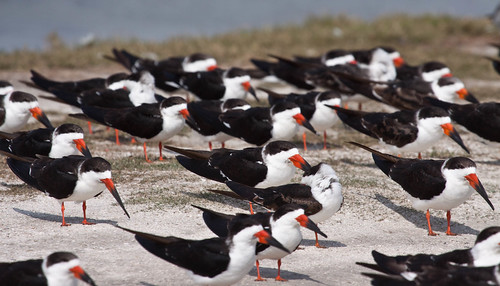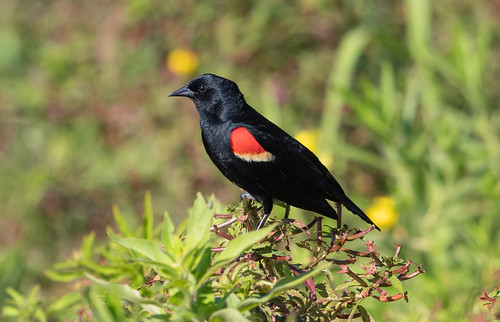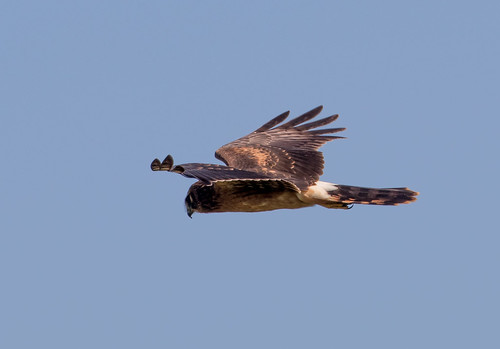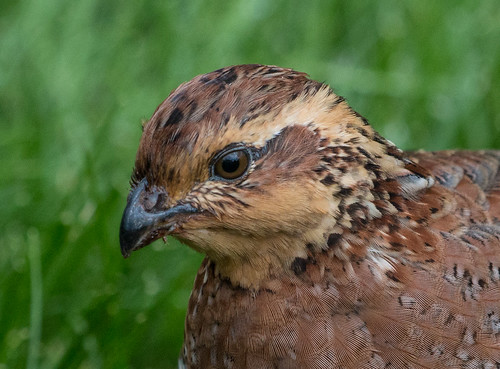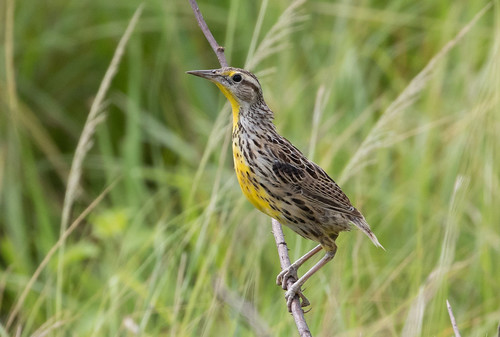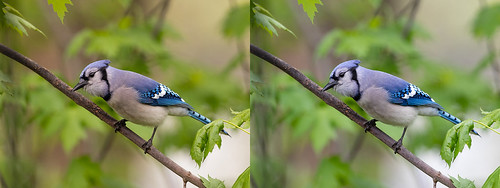How an Insignificant Little Grub Saved the Life of a Mighty Red-tailed Hawk
Based on a True Story
I wrote this story a decade ago, and tried to get it published as a picture book, but for some reason publishers shy away from stories about spunky maggots feeding on necrotic tissue. So I self-published it as a Kindle book in 2012, but have yet to receive a penny for it. Max wanted to be free so here he goes! If you know of a publisher who might like it,
let me know.
Chapter 1: Hungry Babies
Vanessa Redtail was discouraged and weary. She'd been hunting since early morning, scrutinizing every inch of ground, and hadn't detected a single thing. Not a rabbit or a snake--not even a lousy grasshopper!
She didn't mind so much for herself. She was in fine fettle and could easily last two or three days more on a single scrawny mouse if she had to. But her nestlings were starving. Yesterday when Bruno ate little Bobby, it made her downright cranky. Vanessa was a skilled predator who understood Nature's way. Truth to tell, she was relieved to have one less mouth to feed. And although Bobby was hardly more than pinfeathers and bones, he made a satisfying meal for her eldest son. But she always felt a bit irritated when her children ate each other.
She circled above a farm field, noting with distress that the shadow of the oak was getting longer and the afternoon sky paler. Weakening thermals warned her that she didn't have much time left. She saw a movement in a tree--a squirrel! But it stayed in the branches where a buteo with long, broad wings couldn't possibly catch it.
Before she could feel the disappointment, a brown streak flashed through the grass. It looked like a fat snake but moved too fast. A weasel! Vanessa did her best to avoid weasels--vicious, nasty things her mother always said--but today she was desperate. She folded her wings and dropped like a bullet. Her aim was perfect, and she dug her talons into the slinky creature dead center.
Well, not quite DEAD center. Quick as lightning the weasel twisted itself around and sank its teeth into her neck. She screeched with pain but kept her wits about her, deftly biting it at the base of its skull to kill it instantly. In one smooth movement she opened her wings and took off, lugging her booty home. Sticky, warm blood oozed through her neck feathers as she flapped.
Her three babies squawked with hunger as she flew in. With a single practiced bite she snapped off the weasel's head and fed it to Bruno. Bailey got the forequarters and Belle the hindquarters and tail. Although she kept nothing for herself, Vanessa relished the taste of that weasel's blood in her mouth.
She affectionately watched her babies back to the edge of the nest to poop, and then they snuggled down to sleep. All three had full crops for the first time in five days. She would have to search out better hunting grounds tomorrow, before Bruno and Belle started examining Bailey with hungry eyes, but tonight she would sleep well even with the painful neck wound, satisfied with a job well done.
Chapter 2: Pain in the Neck
Two days later, Vanessa's neck hurt as painfully as when the weasel bit her, and now it felt hot, too. Her head ached and her wings were stiff and heavy. The world looked blurry. She'd had great luck hunting yesterday after she discovered a pond in the middle of an open wood. The whole area was crawling with toads and snakes, and even a few mice. The nestlings had eaten well for which she was grateful, because today she was too sluggish and feverish to catch much of anything. She was crabby, too. Flies swarmed about her face, making it hard to see and harder to listen with that incessant buzzing.
One of the flies, named Sweet Shue, was cranky herself. She felt bloated, weighted down by hundreds of eggs all ready to lay, and right when she found the perfect spot for them this pesky hawk had started flying. The wind from its wings made it hard to land accurately. But Sweet Shue was a determined fly, anxious to unburden herself, and she finally got a toehold on Vanessa's neck, quickly deposited a small cluster of eggs, and buzzed off.
Vanessa circled the air. She was too dizzy to see anything on the ground so she gave up and went back to the nest tree while the sun was still high. By day's end, she felt even worse. She wanted to go to sleep and never wake up. But her babies needed her. What would happen to them if she didn't get better soon?
Chapter 3: Max to the Rescue!
The next afternoon, one of the eggs on Vanessa's neck opened up and out popped Max the Maggot. He was a lively little larva, and hungry! He sniffed and sniffed. Something smelled wonderful. The world was still out of focus and he wasn't sure what he was supposed to be doing, but without thinking he started blindly tasting all around.
Vanessa's neck wound tasted yummy! Max went to work gobbling infected tissue as if it were the best thing he'd ever eaten, which, of course, it was. His brothers and sisters were hatching out, too, and within minutes all of them were lined up around the wound like King Arthur's knights at the Round Table. Mmmmmm, they all thought, but they didn't say anything, being quiet little grubs. They just ate and ate and ate.
Vanessa was sicker than ever. She hadn't been able to fly from the tree all day. The pain from her wound was overpowered by a dull throbbing that racked her whole body. The world looked gray and dark despite the sunny blue sky. She could barely see the ground from the nest. She drifted in and out of sleep, wondering if she was going to die. She wasn't scared, just weary, and vaguely wished that whatever was going to happen to her would happen soon.
The nestlings complained more and more as the day wore on, and finally Bruno jumped out of the nest and flapped clumsily off. He came back a couple hours later with blood and a clump of fur sticking to his beak. Vanessa was too weak to ask him what he'd caught.
The next morning she was feeling a little better. Her eyes seemed to be working okay and the throbbing had stopped. Her neck felt odd, but she couldn't see down there so she never guessed she had maggots. If she'd seen them, would she have been grossed out! She'd have shuddered at the repulsive things and clawed them off with loathing. Not being an entomologist, Vanessa didn't realize that some species of maggots digest soft, necrotic tissue, the kind that develops gangrene, and control infections as long as they themselves don't harbor diseases. Luckily, these were healthy maggots. And even more luckily, her wound was too far from her ear openings or eyes for the grubs to work their way inside her head. Now that would have been an ugly predicament! As it was, Max and his brothers and sisters were saving her life and she didn't even know it. Fortunately, they were too busy eating to notice that she never thanked them.
Chapter 4: Wash Behind Your Ears
Soon Vanessa was feeling much better, well enough to preen for the first time in days. She drew each wing feather through her beak, straightening barbs and scraping off dust, grime, and lice. Then she preened her tail, back, and belly feathers. It felt good! The early morning sun warmed her with its radiance, and she savored the sunbeams streaming around glowing pink clouds. It was going to be a beautiful day!
Suddenly, the ground started shaking beneath the maggots. Earthquake! Or, rather, hawkquake! Vanessa was scratching her neck. Her sharp talons combed through the feathers, pulling off dried blood and goop and maggots. The first scratch shook off half of them. They fell to the ground like rice off a wedding veil. The next scratch shook off the rest—all except Max, a most tenacious little fellow. Fortunately for the others, cows that had rested in the shade of Vanessa's nest tree the day before left plenty of manure. Max's brothers and sisters would finish out their larval days in fragrant bliss.
Chapter 5: A Room of His Own
Now Max was alone. He didn't mind. He wasn't particularly close to his brothers and sisters and wouldn't miss them. Besides, they had finished off so much of the festering tissue that there wasn't enough left for a whole family anymore. He had Vanessa's neck all to himself!
He was starting to wonder about the world. Usually it seemed a tiny, dim place, there beneath Vanessa's neck feathers. His mouthparts sucked so hard on her wound that he never noticed much else. When he was just a baby grub, food was all he cared about anyway. Now he was growing older and wiser, and more curious. He decided to crawl around a bit, to get a feel for the lay of the land.
Maggots are not complicated animals, in body or in mind. Max didn't understand that he was living on a hawk, eating her infected tissue, or that hawks are birds that perch in trees and fly in the sky. But he was starting to notice that the air around him sometimes moved and sometimes didn't. He didn't have a clue what caused the windiness, but one morning he started thinking about it. He thought and thought and decided he might try, just for a moment, to take his mouth off his food source and look around. "Pop!" Letting go, his mouth made a popping sound like a cork. A teeny tiny cork, of course, but Max was amazed. He'd never made a sound before. He tried again. "Pop!" And again. "Pop! Pop! Pop!" Max was proud to be making sounds by himself.
The next time the windiness started, Max remembered what he wanted to figure out. He pulled his tiny head up and examined, for the first time, a feather. It was brown and blurry. Max wished he could see it more clearly. Suddenly he noticed something that took his breath away. Peeking through a break between the barbs in Vanessa's feather, he saw something far beyond that was brilliant blue, so pretty and bright that it made his heart ache. Max had discovered the sky.
Chapter 6: Peeking Through Feathers
Max ate and ate, and grew and grew. One day his skin felt so tight he thought he would burst right out of it, and all of a sudden he did! He was soft and squishy for about an hour and then felt like his old self again. But now he was bigger!
He was starting to realize that what he'd thought of as his home was actually somebody alive—someone who could come and go as she pleased. He wanted to thank her for giving him room and board, so one day he searched around and finally found her ear. He said in his loudest voice, "Thank you very much." Vanessa didn't seem to notice, but he couldn't be sure. In any event, he felt glad that he had said it.
Max ate a lot, but he also studied the world. He noticed that whenever he felt that windiness, everything got brighter. He loved popping his mouthparts off Vanessa's neck and peering through her feathers at the sky above and the ground below. The sky was beautiful, but so changeable! On warm peaceful days it was soft, pearly blue. Once when it was steel gray, drops of water raced by. One went through the space in Vanessa's feather right smack onto Max's snout. Was he surprised! Days when the sky was vivid blue were the most perfect days of all. Cottony white masses floated above, and Max thrilled at the many forms they took. They could be thin and wispy like feathers, or fat and round just like him! His favorite clouds were the bright ones with round tops and flat bottoms. He wondered what made them that way.
If Max turned his body exactly right, he could see the ground below. It was more complex and patterned than the sky, and more colorful. He particularly loved the many shades of green. Maple trees were deep and rich, aspens lighter, oaks had a subtly brownish tinge, and spruces were soft and silvery. Of course, Max didn't know anything about trees, but they sure were pretty from so far above.
Chapter 7: Yearnings
From up high, most of the ground was designed in squares as if someone had outlined every field and woodlot with a crayon. Max could never have imagined roads or highways, but he liked the patchwork effect. One unique place didn't fit the pattern. It was outlined in graceful curves, dazzling blue, and alive with sparkles. How Max longed to get a closer look! On sunny days with light winds, the surface danced with merriment. On gloomy, still days it seemed like a gray mirror of the sky. On blustery days it bustled with movement and whitecaps. But always there was a translucent, lovely quality that he yearned to explore. He wished so badly that Vanessa would fly closer just once. Being an inexperienced maggot, Max didn't realize that hawks seldom fly over lakes where no thermal air currents can hold them aloft. He just knew he wanted a closer look.
If only he could make Vanessa understand! Maybe if he talked to her again. He popped his mouthparts off her neck and crawled over to her ear.
"Hello, O wonderful flying creature. You have a magnificent talent. You can take off whenever you like and soar through the sky. The beautiful sky! Won't you consider flying nearer to that great sparkly place? I yearn to see it close up. I would be ever so grateful."
That long, formal speech was quite a production for an uneducated little grub, and the exertion completely tuckered him out. But Vanessa kept flying the same direction she'd been going as if she hadn't heard a word he said. Max wondered if her illness had made her deaf.
All he could think about was that lovely blue sparkly place. What was it? Why wouldn't Vanessa fly near it? Every time she came close he could feel his heart pound with anticipation, but she always veered off at the last moment. "Please, O flying one! Please!" Max pleaded, but she never acknowledged him. He felt small and insignificant.
Chapter 8: Growing Pains
There was less and less for Max to eat as Vanessa healed, and he was feeling lost and out of sorts, which made the yearning worse. Those blue sparkles haunted his dreams. Max wished it were possible for him to go there on his own. How he longed to have wings! To flutter up and go anywhere he wanted! He was growing bored eating the same stuff day in and day out, and now it was harder to find soft food on Vanessa's neck. What a splendid gift flying would be!
Max imagined that he could fly. Where would he go? Of course, first he'd check out the sparkly place. But then... The world was enormous big, he was starting to realize. Sometimes when Vanessa flew way up high in the sky, he imagined himself exploring it all. If only he had wings!
One day Max ran out of food. Vanessa's wound had healed totally, thanks to him, and now there was nothing left to eat. He felt hunger for the first time in his life, but he also had a different strange sensation. At least he thought it was different, but it was hard to be certain since hunger and weird feelings were both new to him.
Vanessa was flying high that glorious afternoon. The sky was ever so blue but Max felt too weak and out of sorts to enjoy it. Unexpectedly, without warning, of its own accord, his mouth let go of Vanessa's neck. With one final, pitiful "Pop!" he dropped off. He didn't know what was happening—all at once he was plummeting down, down, down.
At first he shut his eyes tight. But then it occurred to him that this might be the only time in his whole life that he would be in the air on his own so he tried to look, but everything whirled and whirred too fast to savor. Such a blur of colors! It was beautiful in its own way, and if he weren't shuddering in fear that this would be the last moment of his life, he'd have been thrilled.
He landed on a dandelion leaf and bounced off, huddling on the ground. He felt so peculiar. He didn't know how long he lay there paralyzed—it might have been hours or days—as his mind streamed in and out of consciousness. He dreamed about sparkles and clouds and monstrous feathers.
Chapter 9: A Whole New World
When Max finally woke up, he had his land legs. Legs! How did that happen? Six of them! They had just sort of popped out! With a start, he realized that his eyes could see ever so clearly, every which way. Kaleidoscope eyes! What a dazzling world he found himself in. He stretched and flexed his legs like a ballerina. What a grand feeling! But something weighed down his back. He tried to shake if off but it was stuck. What could it be?
A dewdrop hung from a drooping blade of grass, and with a shock he saw his reflection in it. Max wasn't a maggot anymore! That burden on his back—was a pair of wings! Beautiful, translucent wings! His wish had come true!
He instinctively tensed his back and the wings vibrated, making a soft, raspy sound. He experimented, working his back this way and that, and somehow the wings began to flutter. Harder and harder. He felt a windiness, and realized with joy that he was flying! All by himself!
His beautiful wings carried him up, up, up. At first he flew in a crooked, confused way, but when he mastered steering, Max flew straight to Vanessa and thanked her. Even with his shining silvery wings she didn't seem to notice him, but he was glad he thanked her anyhow.
Then he headed straight for the beckoning sparkly place. It was even more beautiful close up. He flew low to gaze at the mesmerizing waves and listen to the gentle, rhythmic lapping. He envisioned himself alighting on the sparkles, but cool air above the surface seemed ominous. Something deep inside him, deeper than curiosity, warned him not to touch. So Max didn't drown.
Chapter 10: Maggots—The Gathering
Now where to? Max sniffed the air. Something smelled wonderful! He headed off toward the captivating smell. A moose! A big, dead, luscious, putrescent moose! With a bazillion flies just like him all gathered, feasting and buzzing and having a jolly time. He joined them, happy to be one of the crowd again, remembering with nostalgia the carefree days of his early youth.
Max ate until his stomach felt satisfied. Then he washed his eyes and body with his front legs and slowly raised and lowered his wings, feeling their delicate movements with pleasure. A soul-deep restlessness overpowered him. What a big, wide, wonderful world this was! Max itched to explore every inch. A couple of final mouthfuls of the succulent moose and he was ready. With one last glance at the gala feast, he bid his friends "Farewell! Carry on!" And with a flick of his wings, Max flew off into the glorious, enticing unknown.

